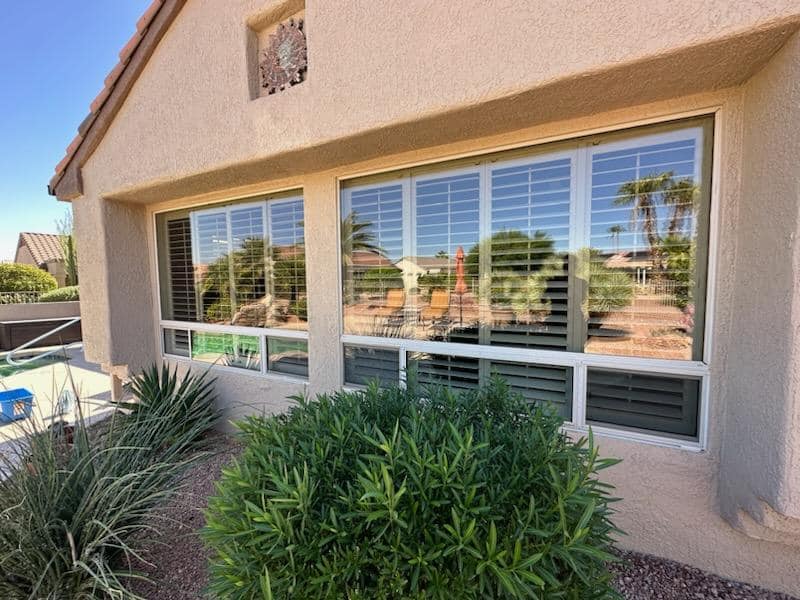In this blog, we’ll discuss the difference between Hydrophilic vs. Hydrophobic glass. Of course, when people talk hydrophilic vs. hydrophobic, they are referring to the material that coats the surface and not the glass itself. While there is no way to distinguish between the two types visually, we’ll discuss how you can identify the difference.
A hydrophilic molecule is “a molecule or substance that is attracted to water. An easy way to think about this is as “water-loving” glass. Since hydrophilic glass is water-loving, water is attracted to the coating. When water runs across a hydrophilic window, it will spread, and appear to run, in “sheets,” down the window. Because the purified water attracts dirt and particles from the window, a well-rinsed window is everything. We suggest using pencil jets on Hydrophilic glass because the water is concentrated during the cleaning but spread out during the rinse. So why aren’t all windows hydrophilic if they are easier to clean? Hydrophilic windows tend to attract not just water, but also soap, which attracts dirt and particles that build on the surface. This fact is mitigated when using water fed because soap isn’t used in the first place.
Hydrophobic, on the other hand, is defined as “lacking affinity for water”. Therefore, hydrophobic glass can be thought of as “water-hating.” Instead of spreading across the glass, as is the case with hydrophilic glass, water runoff beads down the window, sticking to itself, rather than the glass. This makes “rivers” instead of “sheets” during a rinse. When using WF to clean hydrophobic glass, it becomes essential to create that “sheet” artificially. We suggest using fan jets while cleaning with water fed on hydrophobic windows because it spreads out the rinse water, allowing for a more even clean and rinse.
Rinse bars are newer to the market, but use the theory behind fan jets while expanding upon it. They disperse the water across the entire brush surface area and give the window a good, thorough rinse. Hydrophobic glass also tends to repel dirt and particles, which makes them a relatively common type of glass used for windows.
When working on a new job, test the window to see which “type” of glass you’ll be working with by using a little water. The way the water runs down the window will identify whether the glass is hydrophilic or hydrophobic. Hydrophilic runoff comes down in “sheets,” while hydrophobic glass causes water runoff to come down in “rivers.” From there, you can choose which type of jet works best for the glass (or use a rinse bar with both top and bottom streams to get the best of both worlds, regardless of glass type). The last thing to note is that while you may want all glass for one job to be the same “type,” it is rarely the case. Pay attention to water runoff to help you decide which type of glass you’re working on and how to best clean it.


